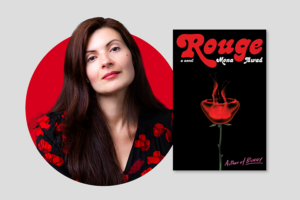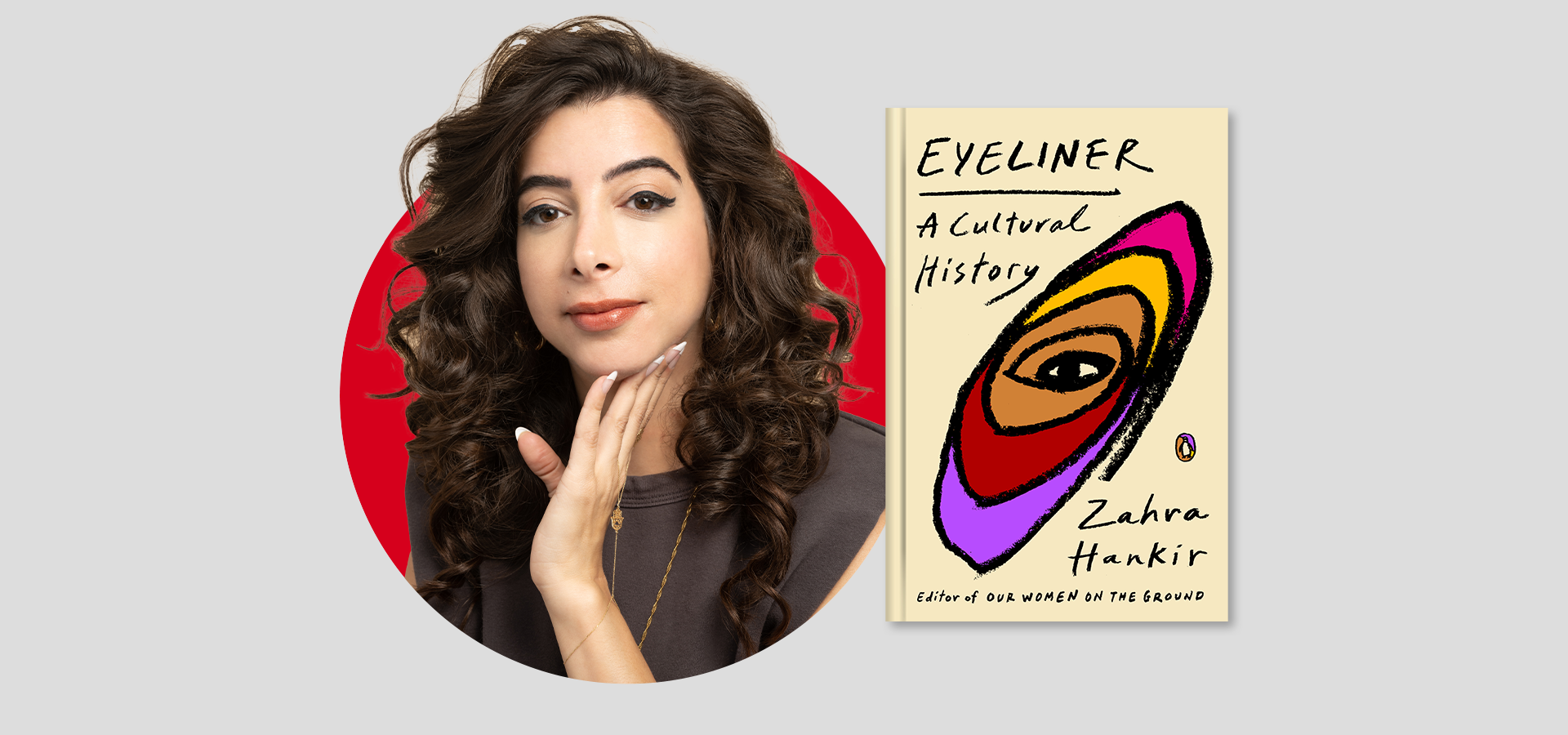
Zahra Hankir | The PEN Ten Interview
December 7, 2023
Zahra Hankir shows us the world through kohl-lined eyes in Eyeliner: A Cultural History (Penguin Press, 2023). From Ancient Egypt to Iran, Petra to Japan, Hankir reveals the rich history of eyeliner and its role in social movements, performances, and everyday life. Through extensive research and intimate interviews, eyeliner’s universality is conveyed as a powerful tool for free expression and cultural assertion across the world. For communities such as Drag Queens and Cholas, eyeliner isn’t just makeup–it’s an extension of who they are. Chronicling the use of eyeliner throughout the ages, Hankir’s Eyeliner: A Cultural History is a profound look at this simple product that doesn’t ignore stereotypes or appropriation.
In conversation with PEN America’s World Voices Festival and Literary Programs Coordinator, Sarah Dillard, for this week’s PEN Ten, Zahra Hankir discusses beauty, gender norms, and how they relate to democracy in Eyeliner: A Cultural History. (Barnes & Noble, Bookshop)
1. What is your relationship to eyeliner? At what age did you start wearing it and on what occasions do you wear it today?
My relationship to eyeliner runs deep. I first learned of it as a young child of immigrants in the UK: I’d watch my mother apply kohl (the earliest iteration of eyeliner) to her waterlines and liquid liner to her lids quite ritualistically every morning. It seemed to my unlined eyes that she was engaging in a moment of transcendence that connected her to something far bigger than herself, and that the pigment made her feel less alone, like she was experiencing a form of self-care.
Her hands were steady, and her gaze unrelenting, even though outside of those moments she lived a life of great chaos, with six children to raise, while being away from her own family as her home country was in the throes of a civil war. On top of that more profound connection, I also recognized that kohl transformed my mother’s looks and by extension her confidence – after darkening her eyes, she seemed ready to face the day, no matter what it might bring her.
At about 12, an Egyptian friend applied kohl to my lids and I haven’t gone back since; after looking at myself in the mirror I felt almost like I could see myself for the first time, like I had come into focus, and like I, too, was connecting to something bigger than myself. It wasn’t until later that I learned about kohl’s Ancient Egyptian origins (I am part Egyptian), and its importance in Arab culture – it is regularly mentioned in literature, poetry, theater, film, music, and art while holding spiritual and religious meaning.
Today, I wear eyeliner every single day. I refer to my look as ancestral chic – I channel Nefertiti (but I also sometimes channel Amy Winehouse, too). I often joke that I feel naked without it on – as if I can’t even recognize myself. Beyond the aesthetics, though, I feel like I’m connecting with my culture, my mother, my sister, my grandmothers, and my ancestors when I’m wearing kohl in the West, especially as it originates in the East. To my mind, when I wear eyeliner, I’m adorning my face with my heritage.
2. Eyeliner more than any other type of makeup can define a person’s identity by the way that it’s applied and is used to transform. How do you think eyeliner gained this ability?
Sharon Dowsett, a renowned UK makeup artist, perhaps put this best: “the fact that [eyeliner] goes straight across the eyelid means it’s quite serious, and you mean business.” The eyes, as they say, are the windows to the soul, and so stenciling them with eyeliner becomes a potent and effective means of non-verbal communication. Eyeliner’s ability to channel one’s identity and transform one’s looks is rooted in its direct and assertive application across the eyelids and waterlines. In this way, eyeliner becomes a visual language, allowing people to convey a range of emotions–from confidence and sultriness to rebellion and self-assuredness–shaping and nurturing a distinctive aspect of personal identity.
Eyeliner’s power as such lies in its precision and the profound impact it can have on how one is perceived by the world. The upturned angle of a wing can itself convey one message, for example, while a line that stops at the edges of the eyes might convey another. And that’s not even mentioning the thickness, color, or patterns of the lines! Take a look at #graphicliner on Instagram: the options are seemingly endless.
“Eyeliner becomes a visual language, allowing people to convey a range of emotions–from confidence and sultriness to rebellion and self-assuredness–shaping and nurturing a distinctive aspect of personal identity.“
3. Eyeliner, in various forms, has deep cultural significance in many places including Iran, India, Japan, North Africa, and the US. Why do you think it’s so universal?
Eyeliner holds universal significance across cultures partly due to its symbolic importance in enhancing, protecting, or treating the eyes; historical traditions that have embedded its use; and its role as a versatile cosmetic that allows for personal expression as well as prettification. Its adaptability in various forms and its association with rituals, rites of passage, and non-verbal communication contribute to its enduring appeal as a cross-cultural beauty and identity marker.
There’s something about the idea of “protecting the eyes” by outlining them that seems quite universal (and ancient). We all recognize the importance of the eyes: the idea that they must be protected with pigment as a result seems a natural extension of this thinking. In cultures across the global south, including in India and the Arab world, eyeliner has historically been thought to ward off the evil eye or evil spirit, such is its power!
I’d like to add here though that despite this universality in different contexts, eyeliner can be used quite uniquely and differently – consider for example the use of eyeliner in Iran in the aftermath of the 1979 Islamic revolution, when cosmetics were officially banned and women were instructed to wear the hijab. Given the outsize importance of the face, many women resourcefully and creatively used makeup including eyeliner, lipstick and nail polish, not just to express themselves, but also at times to engage in a form of disobedience or rebellion. That said, eyeliner use is quite nuanced even then – a simple and subtle stroke of sormeh (naturally produced eyeliner) along the waterlines may be viewed in some corners as permissible, given the Prophet Muhammad was said to have worn a form of eyeliner himself for medicinal purposes. A more bold application of winged eyeliner, however, may be seen as making an entirely different statement, and a risky one at that, given women’s bodies are policed in the country. We’re seeing some interesting and creative uses of graphic eyeliner among Gen-Z today in Iran today, for example, amid a broader crackdown and tightening of restrictions on women for how they are choosing to dress, decorate or present themselves.
4. I was fascinated by the lack of gender norms in Ancient Egypt when it came to eyeliner. Yet in the 1920s, media outlets only focused on women and Neferiti’s style had a far greater influence than her husband’s elongated and prominent eye shape. Why do you think that is?
I would say this comes down to the discovery (in Egypt) and display (in Germany) of Nefertiti’s bust exactly a century ago. Her face in this rendering is stunningly symmetrical, with lined, almond-shaped eyes, a straight-edged nose, pronounced cheekbones that appear naturally contoured, and a regal, tall crown. Together, these features and their proportions mean Nefertiti’s face would score highly if measured against the so‑called golden ratio, a formula thought to be aesthetically optimal.
The distinct lines around Nefertiti’s eyes are diligently applied, meeting at the edges to form her trademark flicks. From a strictly aesthetic perspective, the tracing defines and widens the windows into Nefertiti’s soul, lending them a fresh-looking yet sultry appearance (this look is still very much on trend today, a whole 100 years later).
All that said, it’s almost impossible to glean just how powerful Nefertiti’s looks are until you encounter her bust in person – I did this myself in Berlin in late 2022, when I went on a pilgrimage of sorts. She was breathtaking and captivating at once. It was fascinating also to watch people observe her; they seemed almost to be entranced.
Interestingly, as part of the same excavation that located Nefertiti’s bust, a rather drab-looking sculpture of her husband Pharaoh Akhenaten was also retrieved then “removed” from Egypt and transported to Berlin. When comparing the two artworks, it’s easy to see how one captured the global imagination at the time, while the second was deemed less interesting, by comparison — its most interesting feature being the incomplete lines around one of its eyes. At the Neues Museum in Berlin, Nefertiti’s bust sits in its own ornate and luxuriously designed room; meanwhile, Akhenaten’s bust sits in an adjacent room with a number of other artifacts! I love the irony here, considering Akhenaten was Pharaoh but occupies a far less vivid space in our collective cultural memory.
“Eyeliner carries more profound meaning in communities of color and among minorities in particular, often rooted in one’s spirituality, religiosity, or ancestry. This meaning dates back centuries.“
5. In one interview, an elderly man in Petra says there used to be less shame around wearing kohl for beautification purposes compared to today. Where does this newfound shame come from? Is it Western influence?
I think this has to do with a flaw in the discourse around eyeliner being a superficial “makeup” product that is used simply to “make women look prettier” – possibly a result of Western influence, yes. As already noted, eyeliner carries more profound meaning in communities of color and among minorities in particular, often rooted in one’s spirituality, religiosity, or ancestry. This meaning dates back centuries.
While people continue to use eyeliner in this profound way, there’s also a general recognition that in some spaces, the darkening of the eyes can be viewed as carrying solely superficial purpose. This problematic view is part and parcel of the expectation that beauty and beautification practices are a “female pastime.” The stubborn gendered trope is possibly why there may be some “shame” around wearing eyeliner in more traditional communities today, as compared to the yesteryears. In general, though, I don’t think it’s widespread at all as these communities have worn kohl for centuries and will continue to do so regardless.
6. Men in Japan are starting to wear eyeliner to enhance their looks. Are they overcoming gender norms or succumbing to societal pressures and standards?
I try not to speak to the motivations of groups of people myself, given they can vary from person to person, and also because the use of eyeliner is deeply personal and intentional. But to quote Christopher Tso, a researcher at the University of Cambridge, mainstream beautification practices among Japanese men have aligned with popular “self-help” narratives. For example, instead of simply working at a company and earning wages, in the early 2000s, many Japanese men were now expected to foreground self-optimization in every area of their lives.
To enhance one’s appeal, personal “brand,” and social status, men started to invest extra effort into grooming and using makeup to hide perceived flaws and, consequently, “to increase their likability.” As many of these men were also concerned about transgressing traditional gender norms, they tended to be somewhat secretive about what they used, the end goal being to conceal imperfections rather than to stand out, Tso says; eyeliner to quietly manipulate the shape of the eye was one of the tools that helped achieve this “undetectable” look. In that context, even if these men did choose to wear eyeliner to enhance their eyes, Tso suspects they would feel reluctant to admit it at the risk of appearing overtly effeminate. All that said, the more modern “genderless” subculture, which encourages the adornment of the eyes, has offered men interested in makeup and clothing a haven for self-exploration.
7. People of the global majority have the most intimate connection to eyeliner and use it for medicinal, political, and cultural purposes. Why do you think that is?
The intimate connection between people of the global south and eyeliner utilized for medicinal, political, and cultural purposes stems from the rich historical and cultural significance embedded in its use throughout these regions. Medicinally, eyeliner has been traditionally employed for its perceived protective properties, shielding the eyes from harsh sunlight and environmental elements. This practice started in Ancient Egypt, where eyeliner originated and was known as kohl (the pigment was made from natural substances including malachite and galena). Eyeliner in Ancient Egypt was closely tied to the idea of rebirth or conception, and kohl pots were often buried in tombs.
The cosmetic’s practical use has since evolved into a deeply embedded cultural practice that has been passed down through generations and across different continents and cultures (as I explore in my book, the Wodaabe in Chad, a subset of the Fulani ethnic group, use it in ways similar to the Ancient Egyptians; so too do the B’doul of Petra in Jordan). Whether it is referred to as kohl, kajal, sormeh, or surma in these cultures, the pigment is often mentioned or found in art, literature, philosophy, poetry, music, and theater–a nod to its centrality.
As such, culturally, the use of eyeliner often intertwines with heritage, rituals, and communal identity. Its application can signify rites of passage, mark special occasions, or serve as a link to cultural traditions–fostering a sense of connection and belonging. On the political front, eyeliner, being a visible and easily customizable form of self-expression, also serves as a potent tool for asserting one’s identity and, where possible and relevant, aligning with political movements or groups. The act of adorning eyeliner in specific ways (often depending on the angle of the wing or the colors used) can symbolize solidarity, resistance, or cultural pride, making it a subtle yet impactful means of political expression. The Mexican-American chola community, for example, wear eyeliner as part of a broader aesthetic that embraces bold and distinct styles. Some use eyeliner not only as a cosmetic choice, but as a visual statement of cultural identity and resilience, and even a rejection of Anglo-American beauty norms.
8. How has economics factored in with eyeliner’s popularity?
Throughout the centuries, people have proven to be quite resourceful when it comes to making and applying eyeliner. In the global south, in particular, it can be made from natural substances, including the soot from burned nuts, plants, and tree sap. Often, historically, the composition of eyeliner (as well as the pots eyeliner is stored in) has been dependent on the wearer’s class – one of the most luxurious and expensive formulations that I came across in my research was from Ancient Persia: it was known as the “kohl of seven jewels,” and consisted of crushed and powdered gold, silver, diamonds, rubies, emeralds, and two types of pearls.
More recently, during the COVID-19 pandemic, sales of eyeliner grew globally (while lipstick sales fell), given masks concealed much of the face and the adornment of the eyes became a central focus.
Looking ahead, I expect the economic landscape will continue to play a pivotal role in eyeliner’s popularity. Projections indicate a sustained growth of 5 percent per year for the next several years in eyeliner sales. This anticipated growth can be attributed to several factors, among them, the global beauty industry’s overall expansion (driven by increased consumer spending on personal care and beauty products); the versatility of eyeliner as a tool for self-expression, especially in the context of evolving beauty standards and the influence of social media; and the diverse range of eyeliner products, including innovative formulations and application techniques which cater to an ever-growing audience. On that last note, I also anticipate that Western brands will start exploring and integrating more natural compositions into their offerings.
Separately though related, the continued integration of eyeliner into cultural practices and amid political expression, as noted above, will likely further enhance its appeal across different demographics. As people increasingly understand that eyeliner is more than just a beauty product (with my book hopefully playing a role in this awareness), its symbolic and multifunctional nature will likely drive further interest and engagement, ultimately supporting its projected growth in sales.
“On the political front, eyeliner, being a visible and easily customizable form of self-expression, also serves as a potent tool for asserting one’s identity and, where possible and relevant, aligning with political movements or groups. The act of adorning eyeliner in specific ways (often depending on the angle of the wing or the colors used) can symbolize solidarity, resistance, or cultural pride, making it a subtle yet impactful means of political expression.“
9. In Eyeliner, you describe how the makeup became an extension of free expression throughout history and the world. With this connection to democracy, what do you think eyeliner’s role is in future social movements?
I was recently sent a post (by several people) that went viral on Instagram, featuring a woman wearing eyeliner in the colors of a Palestinian flag, with the caption “when you want to show solidarity, but unfortunately at work you can’t make it obvious.” Eyeliner is quite unique in that regard – like ink itself, you can send the world multiple messages depending on how you wear it.
Similarly, in the future, I do see eyeliner playing a potential role in how people express their politics or their solidarity with specific movements, especially as social media allows for a visually impactful and easily shareable medium to convey messages of resistance, support, and unity. In the above example, explicit or public support for Palestine in some corners can be seen as risky, especially in the workplace, and so a subtle expression of solidarity with the use of makeup can convey a powerful political message through simple strokes of color.
10. Unfortunately, the use of eyeliner among women can be both civil disobedience and a preoccupation with beauty standards. Does the positive outweigh the good? (I think you mean bad?)
My response here would be that eyeliner transcends beauty, so I don’t see its use as a preoccupation with beauty standards at all, even if it does admittedly “beautify” the face. In that regard, yes, I’d say that the good associated with eyeliner in different cultures and communities – with respect to its layered, profound and multifaceted purposes and its use as a celebration of and connection to one’s heritage, or even a form of civil disobedience – surpasses any perceived drawbacks.
Zahra Hankir, a Lebanese British journalist and the editor of Our Women on the Ground, writes about the intersection of politics, culture, and society, particularly in the broader Middle East. Her work has appeared in publications including Condé Nast Traveler, The Observer Magazine, The Times Literary Supplement, BBC News, Al Jazeera English, Bloomberg Businessweek, the Los Angeles Times, and The Rumpus. She was awarded a Jack R. Howard Fellowship inInternational Journalism to attend the Columbia Journalism School and holds degrees in politics and Middle Eastern studies.
The PEN Ten Interview Series
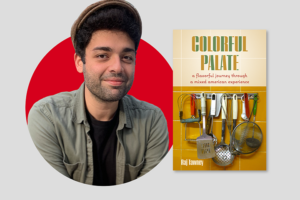
Raj Tawney | The PEN Ten Interview
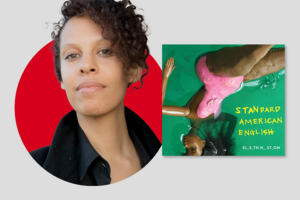
Elisabeth Houston | The PEN Ten Interview
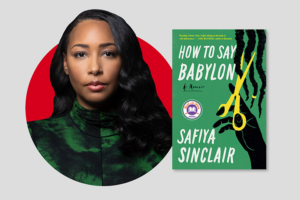
Safiya Sinclair | The PEN Ten Interview
